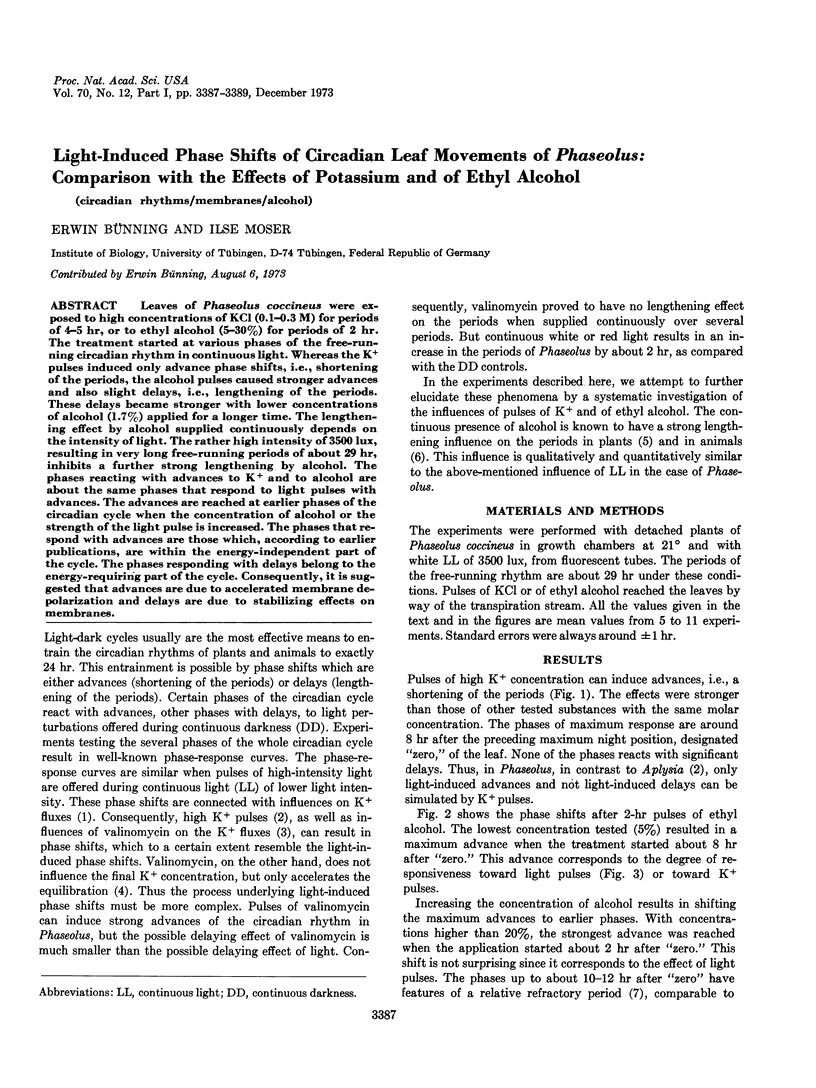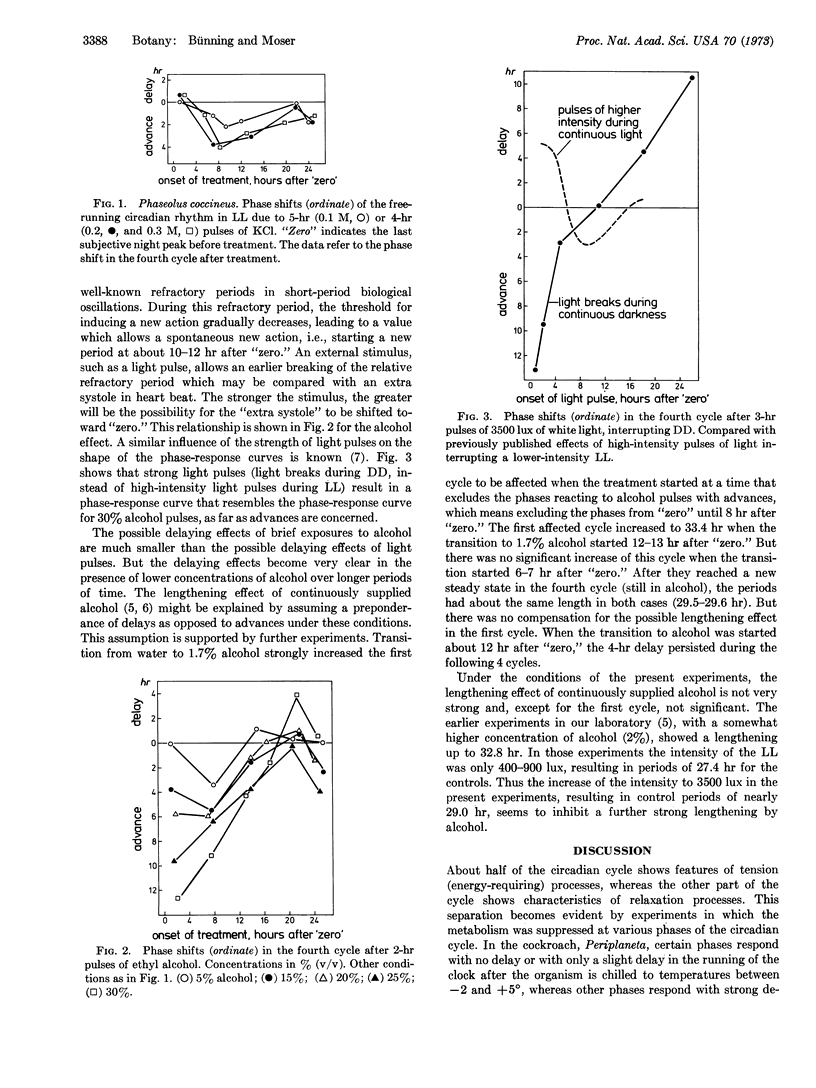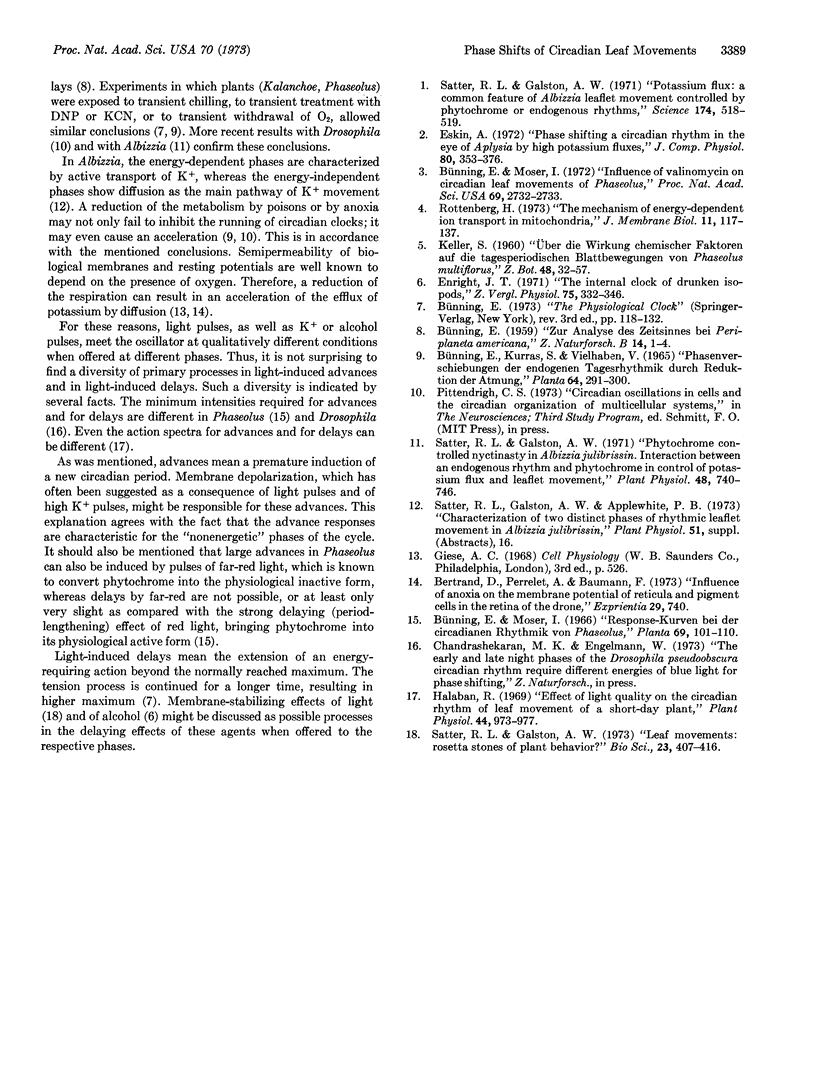Abstract
Leaves of Phaseolus coccineus were exposed to high concentrations of KCl (0.1-0.3 M) for periods of 4-5 hr, or to ethyl alcohol (5-30%) for periods of 2 hr. The treatment started at various phases of the free-running circadian rhythm in continuous light. Whereas the K+ pulses induced only advance phase shifts, i.e., shortening of the periods, the alcohol pulses caused stronger advances and also slight delays, i.e., lengthening of the periods. These delays became stronger with lower concentrations of alcohol (1.7%) applied for a longer time. The lengthening effect by alcohol supplied continuously depends on the intensity of light. The rather high intensity of 3500 lux, resulting in very long free-running periods of about 29 hr, inhibits a further strong lengthening by alcohol. The phases reacting with advances to K+ and to alcohol are about the same phases that respond to light pulses with advances. The advances are reached at earlier phases of the circadian cycle when the concentration of alcohol or the strength of the light pulse is increased. The phases that respond with advances are those which, according to earlier publications, are within the energy-independent part of the cycle. The phases responding with delays belong to the energy-requiring part of the cycle. Consequently, it is suggested that advances are due to accelerated membrane depolarization and delays are due to stabilizing effects on membranes.
Keywords: circadian rhythms, membranes, alcohol
Full text
PDF


Selected References
These references are in PubMed. This may not be the complete list of references from this article.
- Bünning E., Moser I. Influence of valinomycin on circadian leaf movements of Phaseolus. Proc Natl Acad Sci U S A. 1972 Sep;69(9):2732–2733. doi: 10.1073/pnas.69.9.2732. [DOI] [PMC free article] [PubMed] [Google Scholar]
- Halaban R. Effects of light quality on the circadian rhythm of leaf movement of a short-day-plant. Plant Physiol. 1969 Jul;44(7):973–977. doi: 10.1104/pp.44.7.973. [DOI] [PMC free article] [PubMed] [Google Scholar]
- Rottenberg H. The mechanism of energy-dependent ion transport in mitochondria. J Membr Biol. 1973;11(2):117–137. doi: 10.1007/BF01869816. [DOI] [PubMed] [Google Scholar]
- Satter R. L., Galston A. W. Phytochrome-controlled Nyctinasty in Albizzia julibrissin: III. Interactions between an Endogenous Rhythm and Phytochrome in Control of Potassium Flux and Leaflet Movement. Plant Physiol. 1971 Dec;48(6):740–746. doi: 10.1104/pp.48.6.740. [DOI] [PMC free article] [PubMed] [Google Scholar]
- Satter R. L., Galston A. W. Potassium flux: a common feature of albizzia leaflet movement controlled by phytochrome or endogenous rhythm. Science. 1971 Oct 29;174(4008):518–520. doi: 10.1126/science.174.4008.518. [DOI] [PubMed] [Google Scholar]


